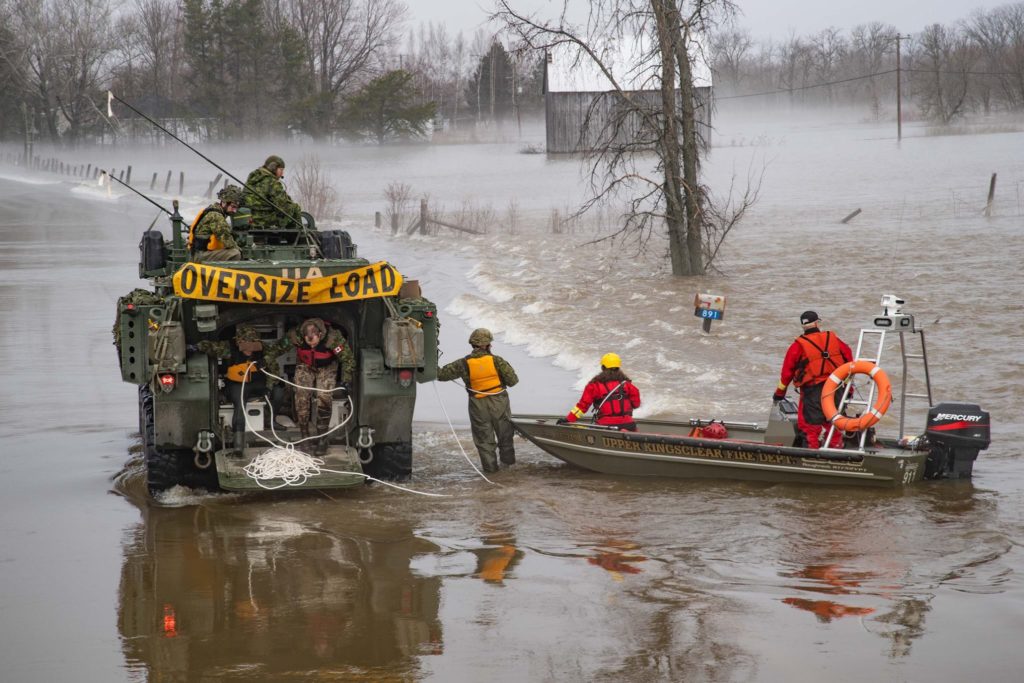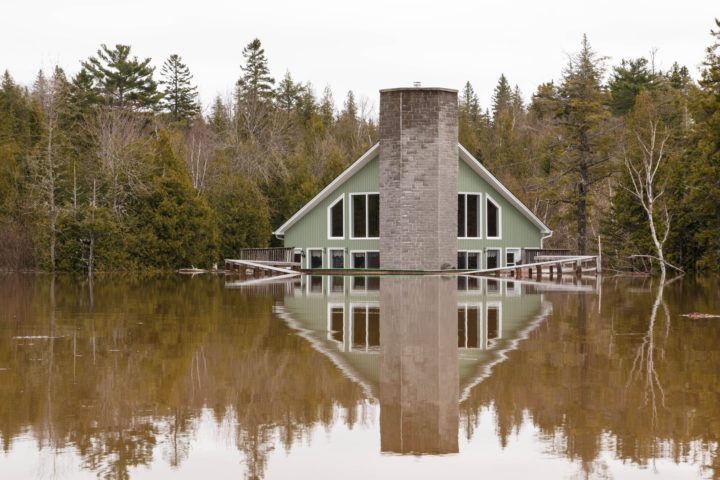*Pic. Ernest MacGillivray was director of the province’s emergency measures organization between 2003 and 2009. He was then director of the organization’s emergency services branch between 2009 and 2013.
Although the number of natural disasters is increasing, Ernest MacGillivray says government responses haven’t changed.
While the changing climate means more natural disasters are hitting New Brunswick and the rest of Canada, questions remain about whether the nation’s emergency measure services are keeping pace with extreme weather events.
“The idea that we can write a cheque every time it floods, we know that’s not sustainable,” said Ernest MacGillivray, a retired director of the province’s emergency measures organization (EMO). “That’s not a good way to reduce disaster risk in the future.”
MacGillivray left public service in 2013 after 26 years with the provincial government.
He said when you work in EMO, you’re often caught in the day-to-day operations. Now, with some distance from the job, the retiree is looking at the big picture.
MacGillivray left public service in 2013 after 26 years with the provincial government.
He said when you work in EMO, you’re often caught in the day-to-day operations. Now, with some distance from the job, the retiree is looking at the big picture.
The number of natural disasters increasing
The former civil servant said while Canada has sizable climate emergencies, like wildfires or overland flooding, it doesn’t have events he’d classify as catastrophic.
Conversely, the United States regularly has events, like Hurricane Maria hitting Puerto Rico a year and a half ago, that can cost billions of dollars.
In the early 1990s – when MacGillivray started his career at EMO – New Brunswick was hit with a “big event,” costing millions of dollars, every few years, he said.

When he left that job with EMO in 2013, it was closer to five such events per year. He believes it’s even higher now.
These increasing floods, ice and wind storms aren’t just taking a toll on the province’s infrastructure. New research from the Conservation Council shows that climate change and the extreme weather it’s fuelling is also affecting New Brunswickers’ physical and mental health.
Still, while the frequency of these disasters increases, MacGillivray said the typical government response hasn’t changed.
In the wake of an emergency, everyone – including lawmakers – want to do everything they can to help those affected, he said. But when the water recedes or the fire dies, often so does the support.
“Once things settle down politically, they’re [elected representatives] not that interested in hearing from you [EMO employees],” he said.
He suggests the reason is that while an event costs millions, it’s not a sizable chunk of the budget. In fact, following a disaster, a small boom in local economies is typically reported as people repair and rebuild.

MacGillivray said he’d like to see a five-year plan, with goals set by different levels of government to determine what can be done proactively, rather than reactively, to help people whose homes or businesses may be at risk. He’d also like an annual report to track the progress.
“That’s a harder investment to make,” he said. “Because you have to borrow money from today to help mitigate something that might happen down the road.”
He said such progress needs to be done “in the margins,” during the window after an event before people lose interest.
Alberta has the most progressive emergency services programs in the country, he said, due to the large amount of events that happen there. Following the Fort McMurray fire and Calgary flood, the Alberta government invested millions in post-disaster mitigation projects and placed new emphasis on building community disaster resilience.
Still, “programs in Canada are probably not, in most cases, best practices,” MacGillivray said.
Unincorporated areas difficult to provide for
New Brunswick brings its own set of challenges when it comes to dealing with emergencies. MacGillivray said roughly a third of the population lives in either Saint John, Moncton or Fredericton, a third lives in smaller municipalities and a third lives in unincorporated areas.
Emergency management requires resources and expertise, which are difficult to provide in those unincorporated areas.
But while government responses remain the same, he said the way EMO operates and is structured has evolved, somewhat.
When he started work, the organization had only a few staff members organized in a central office. Today, EMO has a couple dozen staff members, including those who work with local governments managing programs and events in unincorporated areas.
‘No one likes to be caught by surprise’
MacGillivrary believes greater education would go a long way in Canada.
Flood-risk mapping should be updated, he said, and people should be warned what dangers their properties are exposed to and whether they’re eligible for disaster relief.
He’d like to see some sort of door-to-door educational program institutionalized.

“No one likes to be caught by surprise,” he said.
What encourages him is seeing more people with Master’s or PhDs enter the profession.
He believes the next generation of EMO workers will add sophistication to the industry, specifically to risk management and policy development.
Holistic approach needed
All in all, MacGillivray said Canada should approach its emergency programs and climate change more holistically.
He believes the country’s plan for climate action is to say a lot while doing only enough to “stay in the game.”
While Ottawa has committed to get rid of coal-fueled electrical generation by 2030, we still use carbon pollution emissions targets created under the Harper administration, lowballed even for the time. And carbon emissions are actually increasing, he said.
“The challenge is to get governments to buy into the fact that we need to do something different now. It has to be programmatic. And it needs to be sustained beyond year-to-year funding.”
The same is true for emergency management.
“We talk big, we act, relatively, modestly,” he said.
Part five of our new series, After the flood: how climate change and the extreme weather it’s fueling affect New Brunswickers’ physical and mental health
Recommended links:
- After the flood: anxiety on dry ground
- After the flood: feeling betrayed, twice
- After the flood: putting things into perspective
- After the flood: deciding to stay
- New Conservation Council report: climate change, floods, ice storms affect our health
- Read our new report, Healthy Climate, Healthy New Brunswickers: A proposal for New Brunswick that cuts pollution and protects health

